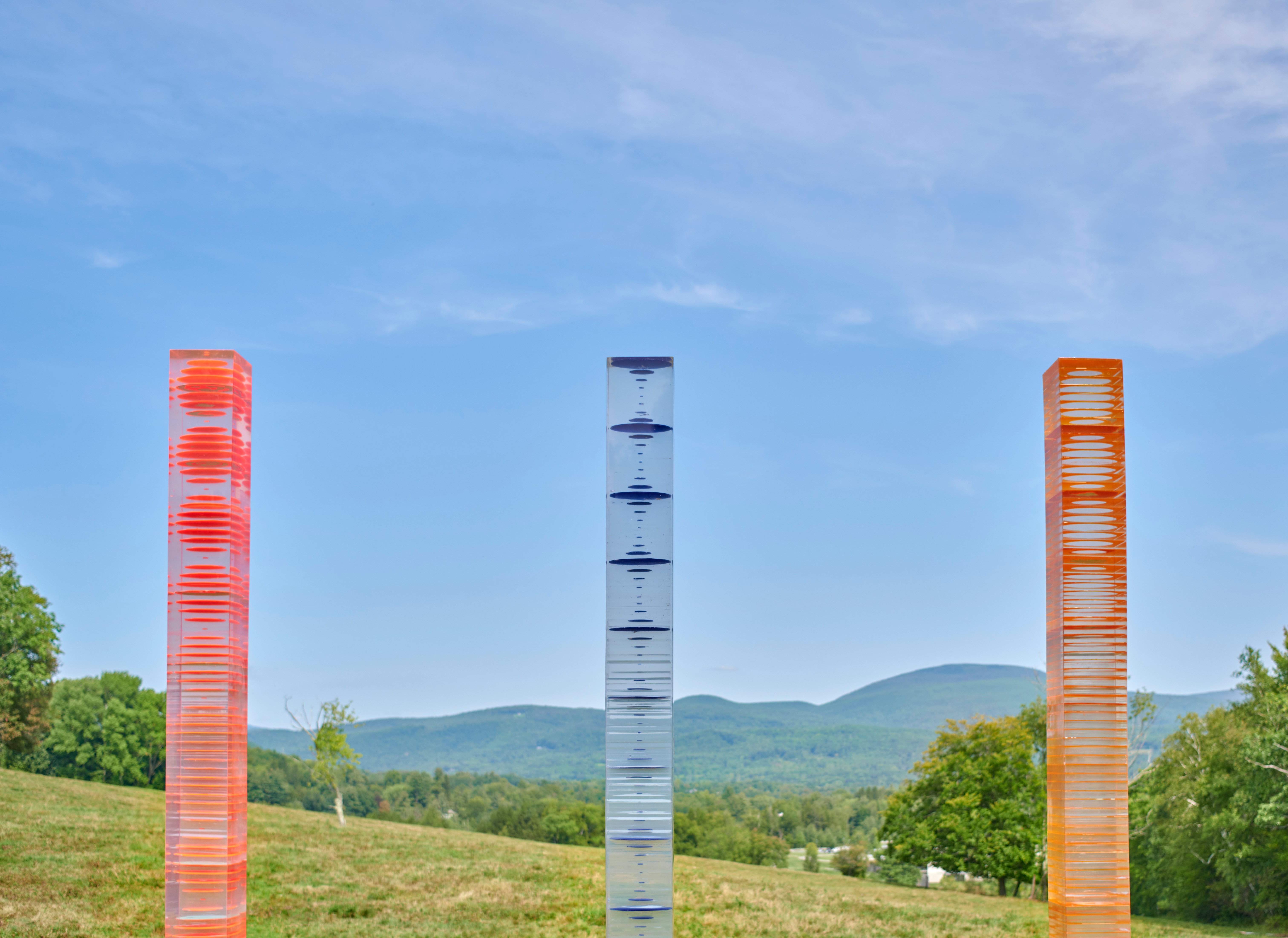
One of the best parts about summer art exhibitions is that many offer opportunities to spend time outdoors.
One of the season’s most exciting shows for this kind of escape—to take in beautiful artwork in an even more beautiful setting—is the Clark Institute’s “Ground/work,” which welcomes visitors to the sprawling grounds of the Berkshires-based museum in Williamstown, Massachusetts.
The show, the museum notes, highlights “a reverence for nature and a desire to further enliven the surrounding trails, pastures, and woods” of the property, and brings together bold, colorful installations from six contemporary female artists: Kelly Akashi, Nairy Baghramian, Jennie C. Jones, Analia Saban, Haegue Yang, and Eva LeWitt. All of the artists planned their works in response to sites they chose by hand, each of which are scattered about the Clark’s massive 140-acre campus. The works were also planned with the changing landscape—and visitors hoping to escape into the bucolic wilds of the Berkshires—in mind.
“Ground/work,” according to the museum, “highlights the balance between fragility and resilience that both nature and the passage of time reveal, while offering fresh experiences with every visit.” The works were conceived in part as a way to help visitors re-enter the world again, following a long year of isolation, and gently encourages them to re-engage with themes like the comforts of nature and community.
One of the most striking works in the show is perhaps Eva LeWitt’s Resin Towers (2020), which were assembled by the New York-based artist from tall pieces of colorful plastic in hues like fluorescent orange, yellow, and light aqua, and cast in layers of transparent resin. Together, the pieces create a pattern of expanding and contracting spheres as the viewer approaches the works or moves further away, depending on where they stand. The work was also planned to interact with particular elements of the landscape (including the sky, woods, grass, and light) and time of day, morphing as time passes, and seems to twirl more and more quickly as viewers approach it as if to “call them down the hill and beckon visitors to their site.”
The works, which in many ways celebrate the “purity of hue against an ever-shifting landscape,” according to the museum, will be on view until October 17. See images of the show below.
Eva LeWitt, “Resin Towers” (2020). Photo courtesy of the artist and VI, VII, Oslo. Photo: Thomas Clark.
A closeup of one of LeWitt’s “Resin Towers” (2020. Photo courtesy of the artist and VI, VII, Oslo. Photo: Thomas Clark.
LeWitt with her artwork. Photo courtesy Eva Lewitt.
A closeup of one of LeWitt’s “Resin Towers” (2020. Photo courtesy of the artist and VI, VII, Oslo. Photo: Thomas Clark.
One of LeWitt’s “Resin Towers” (2020. Photo courtesy of the artist and VI, VII, Oslo. Photo: Thomas Clark.
Eva LeWitt, “Resin Towers” (2020). Photo courtesy of the artist and VI, VII, Oslo. Photo: Thomas Clark.
Eva LeWitt, “Resin Towers” (2020). Photo courtesy of the artist and VI, VII, Oslo. Photo: Thomas Clark.